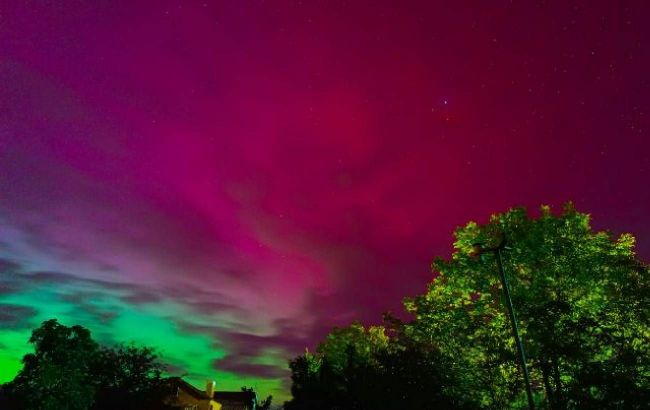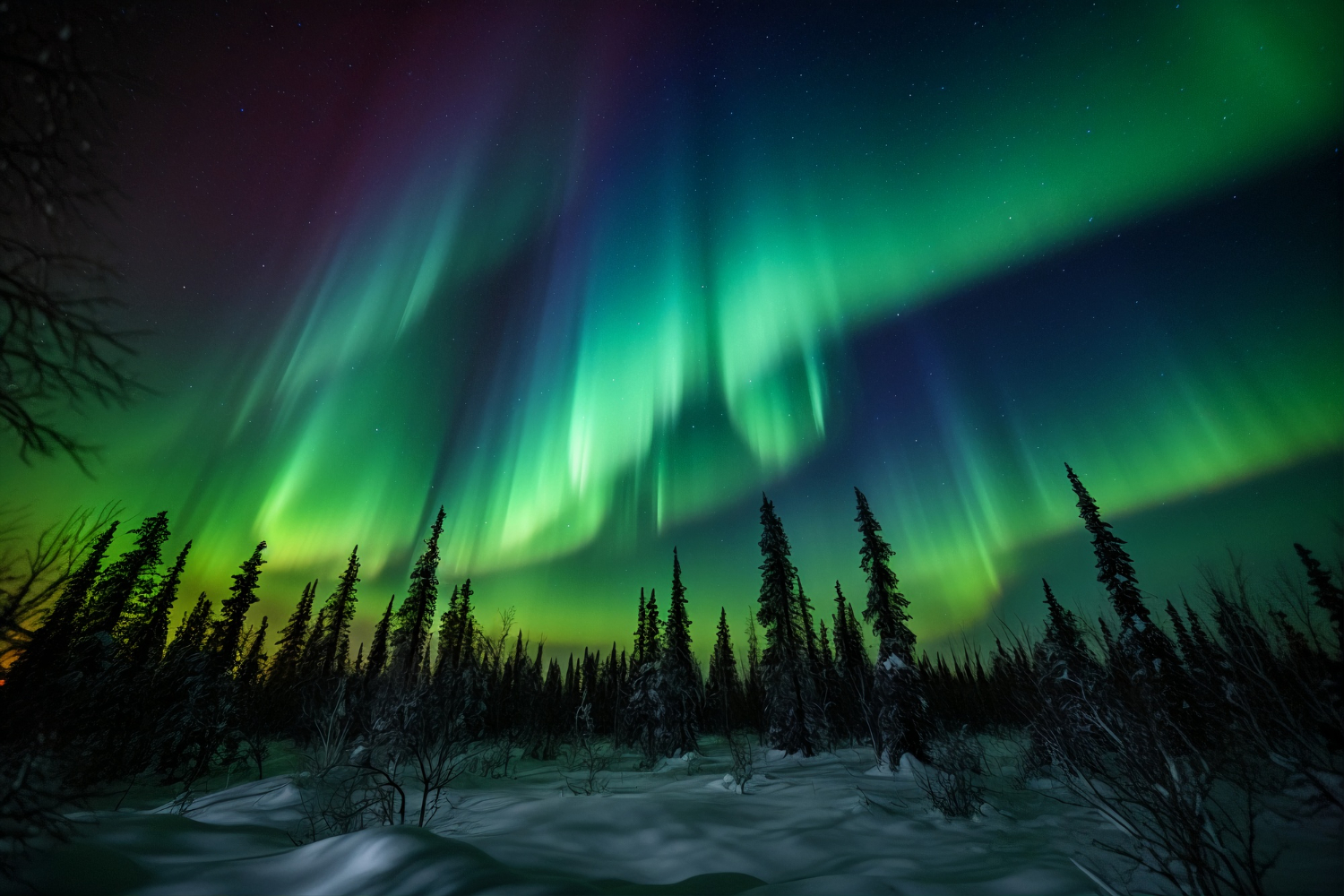Green, red, and purple: Scientists explain variability of aurora colors
 Aurora Borealis over Ukraine on May 13 (photo: facebook.com/r.semenivka)
Aurora Borealis over Ukraine on May 13 (photo: facebook.com/r.semenivka)
The Sun is approaching the peak of its 11-year cycle, so it is becoming as active as possible. Since the aurora is caused by solar particles that penetrate the Earth's atmosphere, this phenomenon will be quite frequent in the coming year and can be observed not only near the poles, according to Phys.
How the aurora appears
Auroras are caused by charged subatomic particles that smash into the Earth's atmosphere. They are emitted from the sun all the time, but most of them are seen during periods of great solar activity.
Most of our atmosphere is protected from the flow of charged particles by the Earth's magnetic field. But near the poles, these particles can penetrate the atmosphere.
The Earth's atmosphere is made up of about 20% oxygen and 80% nitrogen, with some other substances such as water, carbon dioxide (0.04%), and argon.
When high-speed electrons smash into oxygen molecules in the upper atmosphere, they split the oxygen molecules into individual atoms. The resulting oxygen atoms are in an excited state and therefore emit energy in the form of light.
What makes the green light?
Green aurora is the most commonly seen phenomenon. It occurs when it is emitted by oxygen atoms that are transitioning from a state called “¹S” to a state called “¹D”. This is a relatively slow process that takes almost a full second on average.
In fact, this transition is so slow that it doesn't normally occur at the kind of air pressure we see at ground level, because an excited atom would lose energy by colliding with another atom before it had a chance to send out a green photon.
But in the upper part of the atmosphere, where there is lower atmospheric pressure and therefore fewer oxygen molecules, they have more time before they collide with each other and therefore have a chance to release a photon.

Green is the most common color of the aurora borealis (photo: Freepik)
What makes the red light?
After this green photon is emitted, the oxygen atom is in another excited state with no allowed relaxation. The only way out is another forbidden transition from the “¹D” state to the “³P” state, which emits red light.
The “¹D” state has to exist for about two minutes before it can finally break the rules and emit a red light. Because it takes so long, the red light only appears at high altitudes where collisions with other atoms and molecules are insignificant.
Red light tends to appear only in intense auroras.
Why do other colors appear?
Although green is the most common color of the aurora and red is the second most common, other colors also exist. In particular, ionized nitrogen molecules can emit blue and red light. This can create a purple hue at low altitudes.
All of these colors are visible to the naked eye if the aurora is bright enough. However, they appear with greater intensity in the camera lens.

